#but maybe having van around and seeing that alt future version try to be a better person in their 2nd chance could
Text

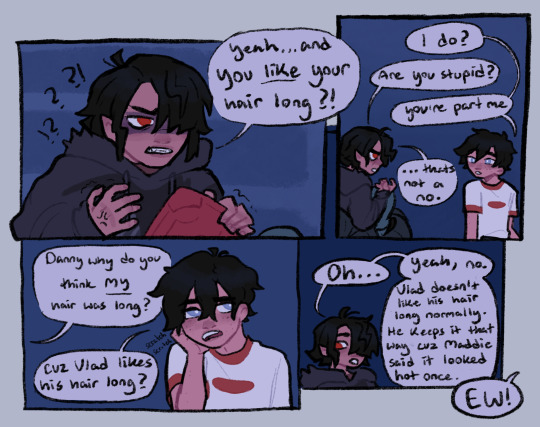
Idiot to Idiot communication
#there's a part 2 to this in my brain but idk if I'll draw it and this can stand alone fine too#danny phantom#my art#van life au#agit technically#i like when older danny grows his hair out but i could kinda see him avoiding it as a way of avoiding that evil alt future#like hes uncomfortable with how it likens back to it#but maybe having van around and seeing that alt future version try to be a better person in their 2nd chance could#ya know relieve any of that anxiety#so i wanted to illustrate them having a conversation about it#but i got stuck on thia funny beginning part#who knows if I'll get around to the serious part
5K notes
·
View notes
Text
Rosa - Doctor Who blog
(SPOILER WARNING: The following is an in-depth critical analysis. If you haven’t seen this episode yet, you may want to before reading this review)
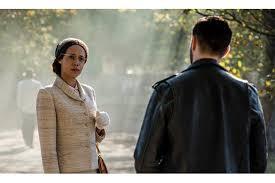
It comes as a massive relief to say that I really enjoyed this episode. There are a number of ways Rosa could have gone wrong and while Chris Chibnall has managed to crank out two surprisingly good Doctor Who episodes so far, it’s hard to shake off old fears. Oh my God, I thought to myself, a historical episode about Rosa Parks and the Black Civil Rights Movement. Is Chibnall biting off more than he can chew?
Thankfully Chibnall had the good sense to hire a co-writer that can keep his white privilege in check. Malorie Blackman. Author of the critically acclaimed Noughts and Crosses series of books depicting an alternative reality where Africans developed a technological advantage over Europeans and where white people are segregated under this world’s version of the Jim Crow laws. It’s safe to say that Blackman knows a thing or two about exploring racism and, being a black woman, she’s much more qualified to talk about issues of race and to represent Rosa Parks and the Civil Rights Movement as a whole than Chibnall is. The result is, without a shadow of a doubt, some of the best Doctor Who I’ve seen in years.
One thing I’m glad about is the way Rosa Parks is depicted. Historical stories (particularly New Who historical stories) have an unfortunate tendency to go completely over the top with it. It’s just not enough to have a character who played a significant part in human history. Oh no. They’ve also got to be the specialist, most important person in the whole wide universe. The result is that we’re often left with a wafer thin episode that completely romanticises the period of history the story is trying to depict, waters down all the more complicated and unsavoury parts of the historical setting and turns the famous historical figure into a shallow caricature of themselves (see Agatha Christie in Unicorn And The Wasp, Winston Churchill in Victory Of The Daleks and Vincent Van Gogh in Vincent And The Doctor). Rosa, thankfully, doesn’t fall into the same trap. Rosa Parks isn’t treated as a god among mortals. She’s treated like an ordinary person, thus making her actions that much more powerful.
Vinette Robinson (who appeared in a previous Chibnall penned story 42) does an incredible job playing Rosa Parks. Again, more emphasis is placed on how ordinary she is rather than how historically significant. Nowadays we of course view her as the genesis of the Black Civil Rights Movement and she has rightly been praised and immortalised for that, but it’s easy to forget that she was a real person behind the legacy, which is what the episode really delves into. We get to see her fear, sadness and frustration in this oppressive society. And it really brings home how mundane her actions really are. Sure we can see from hindsight how her actions would influence others and change the course of history, but she wasn’t some heroic freedom fighter taking a stand. She was a woman who just wanted to sit down on a bus after a hard day at work. And the fact that she, Martin Luther King and other black people actually had to fight for the right to do something so trivial is utterly ridiculous.
Some have criticised the episode saying that this is too heavy a subject matter to deal with at 7pm on a Sunday evening. I couldn’t disagree more. For one thing, this isn’t the first time Doctor Who has handled difficult subject matters (Nazism and genocide have frequently cropped up in past stories after all). But I think the criticism mostly stems from people (white people) being left feeling uncomfortable by the story and are trying to avoid having a serious conversation about it NRA style, claiming that this isn’t the right time for it. Well... when is it the right time? Nobody wants to have this conversation, sure, but we’ve still got to have it. And as uncomfortable viewing as it is, it’s important that it is not sugar-coated and that we’re reminded of how difficult things were for non-white people so that shit like this never happens again. So no, I didn’t think the use of violence against black people or racially charged language up to and including the n word were inappropriate. It was an accurate depiction of the environment at the time and if you felt uncomfortable by that, then congratulations, that’s precisely what you’re supposed to feel.
In fact I honestly thought the episode’s depiction of violence against black people was quite restrained, making the acts of discrimination that much more despicable in my eyes. Using gratuitous violence would have been a cheap shot and Chibnall and Blackman mercifully avoid that route. What makes the episode so chilling to watch isn’t the things that white people do, but rather the oppressive atmosphere they create. It’s not the arrogant tosspot slapping Ryan across the face for touching his wife’s glove that had me on edge. It was the scene after that where everyone is just silently staring at the TARDIS crew in the cafe that really made me feel queasy. The threat is implied, yet constant, which is infinitely scarier. After the likes of Steven Moffat and Mark Gatiss boasting about how their episodes were going to be ‘the scariest Doctor Who stories ever’ only for them to amount to a hodge-podge of tired horror cliches and a dumb monster going ‘boo’, it’s a relief to see writers take a more subtle ‘less is more’ approach. I’m sorry, but the bus driver glaring angrily at Rosa is much more terrifying than a Weeping Angel. Period.
Which brings me to Krasko, played with smug charm by Joshua Bowman who succeeds at making you want to reach through the screen and punch his racist face repeatedly. Again, some have criticised the episode for its ‘one dimensional villain’ and, again, it only seems to be white people making this criticism. Not to make sweeping generalisations here, but non-white fans seem to be largely happy with how Krasko was written and depicted, probably because they’ve had to deal with pricks like him at least once in their lives. I’m guessing the source of the criticism comes from him not having a backstory or concrete motivation other than he hates black people. But my response to that is... does he really need one? Would Krasko have really been a more interesting character if it was revealed that he was bullied in school or a black kid had stolen his My Little Pony lunchbox? Does there really need to be a reason for why he hates black people and wants to ‘put them in their place’? I would have thought him being a racist white person would have been enough reason to hate him frankly. Let’s not forget what happened when Star Wars and Marvel respectively gave their villains Kylo Ren and Kilgrave tragic backstories to provide context for their despicable actions, at which point the fans proceeded to romanticise the fuck out of them, calling them misunderstood. Maybe (and this is just my opinion) giving Krasko a backstory wouldn’t have made him more interesting, but instead would have been seen as an attempt to justify and excuse his shitty behaviour, and maybe, just maybe, we’re better off without one. Just a thought.
Besides, it’s not as if we don’t learn anything about Krasko. We’re given enough information to work with. He’s a time traveller from the future. He was put in prison for murdering two thousand people (quick side note, did anyone else laugh when the Doctor said the Stormcage was the most secure prison in the universe? Remind me, how many times did River Song break out again?). He’s clearly intelligent, as demonstrated by him coming up with a non-violent plan to ruin the lives of generations of non-white people in order to circumvent his neural inhibitors. While it’s never overtly mentioned, he’s clearly some future version of the alt-right and is there to act as an extension of the true villain of the story. Because that’s the thing the people criticising his character have overlooked. Krasko isn’t the villain. White people are. The society Rosa Parks lives in is the true villain. Krasko is there not just to get to the plot going, but also to subtly demonstrate that while things do get better for non-white citizens, there will always be that racist element within our society. Hell, Ryan and Yasmin even spell it out for you in their conversation whilst hiding from the police. While people like Rosa Parks and Martin Luther King made a huge impact and helped change things for the better, racism and prejudice hasn’t just magically gone away. It’s still around. There are still people who cling on to these extremist and bigoted views. Some might argue that racism has become so entrenched in Western society that it will never fully go away. That there will always be some remnant hanging around. That’s what Krasko represents. So if you thought he was a rubbish villain because he had ‘no backstory or motivation’ then I’m afraid you’ve completely missed the point.
I should also applaud Chibnall and Blackman for resisting the urge to shove in some pointless alien like other historicals have. Not only would that have distracted from Rosa’s story, the racist white people are scary enough thank you very much. While there are sci-fi elements in here, the episode quite rightfully focuses on people.
Speaking of people, let’s talk about the TARDIS crew. Yeah! They’re in this episode too! Haven’t really talked about them much, have I? The Doctor largely takes a backseat in this one, which I know some people have a problem with, but I think it was the right thing to do. We don’t want an alien white woman coming in and stealing Rosa Parks’ glory. Jodie Whittaker graciously lets Vinette Robinson take centre stage while she busies herself with other things like confronting and intimidating Krasko and organising fake raffles with Frank Sinatra. I really like the balance they’ve struck between light and dark with this Doctor (something Moffat tried to do with Peter Capaldi’s Doctor and failed at miserably). She’s funny, compassionate and caring, but there’s a little bit of Sylvester McCoy’s devious cunning in there too, which really comes to the forefront here. Did anyone else find it really disconcerting seeing the Doctor try to maintain history? Influencing events so that Rosa Parks had no choice, but to give up (or refuse to give up) her seat. While we know she’s doing it for the right reasons, in order to keep black history in check, she’s still nonetheless actively contributing to Rosa’s misery, which is actually a clever way of exploring how white people all contribute to a racist status quo, directly, indirectly, intentionally and unintentionally. And of course it all culminates in the Doctor and co refusing to give up their seats in order to keep history intact. The look on Thirteen’s face as events unfold says it all. The look of sheer sadness and self loathing, knowing she played a part in this, is haunting. Same goes for Graham’s realisation. The widower of a black woman and step-grandfather to a black teenager being forced to contribute to this racist institution is utterly heartbreaking.
But the standout of the main cast has to be Ryan. Tosin Cole truly shines in this episode, giving an incredibly powerful and moving performance. This in many ways is his episode as he comes face to face with the racist prejudices of the time period and Cole rises to the occasion. My favourite scene has to be when Ryan talks with Rosa, thanking her for everything she will do in the future and promising that things will get better. It’s incredibly emotional and I actually started tearing up with him. I’m also so happy that he was the one that got to beat Krasko at the end rather than the Doctor. I stood up and cheered. And his reaction to seeing Martin Luther King has got to be one of the most charming moments of the series so far.
Rosa is unquestionably one of the strongest episodes in all of Doctor Who. It’s incredibly well written and performed and it’s extremely powerful as well as being very subtle and nuanced. What’s more, I’m now completely sold on Chris Chibnall being the showrunner. Any lingering doubts I’ve may have had are now completely evaporated after this episode. Rosa proves that not only does Chibnall respect and value diversity both in front of and behind the camera, but that he’s also committed to creating something truly special with his tenure, using the Doctor Who format to explore hard hitting and difficult subject matters with care and respect. Truly excellent television.
#rosa#malorie blackman#chris chibnall#doctor who#thirteenth doctor#jodie whittaker#graham o'brien#bradley walsh#yasmin khan#mandip gill#ryan sinclair#tosin cole#bbc#review#spoilers
77 notes
·
View notes
Photo
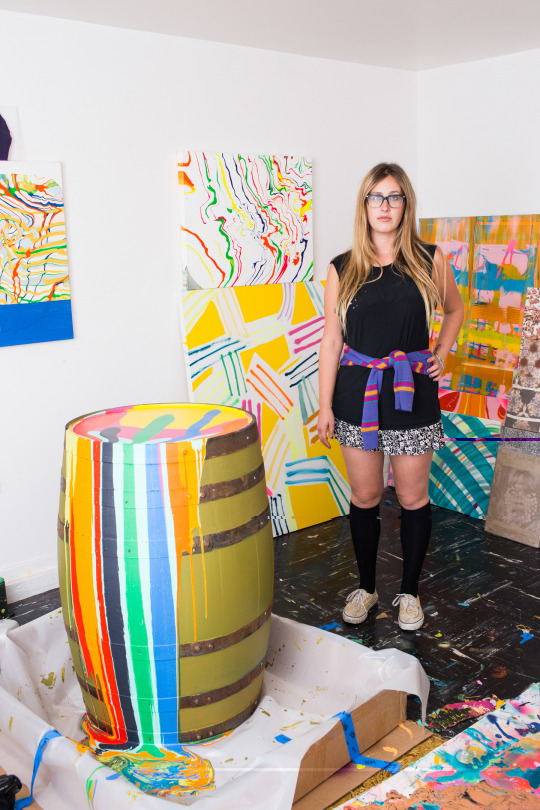
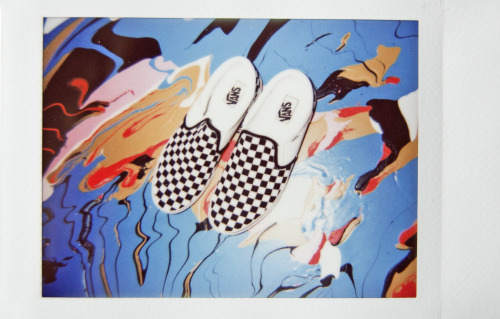
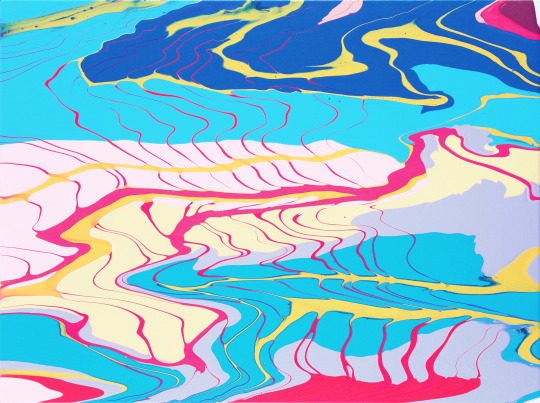
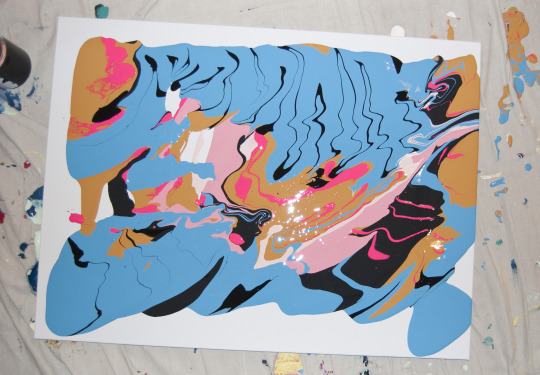

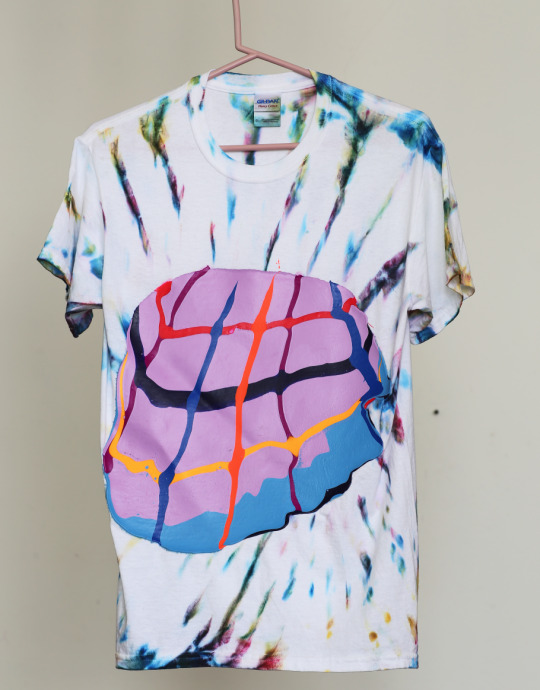

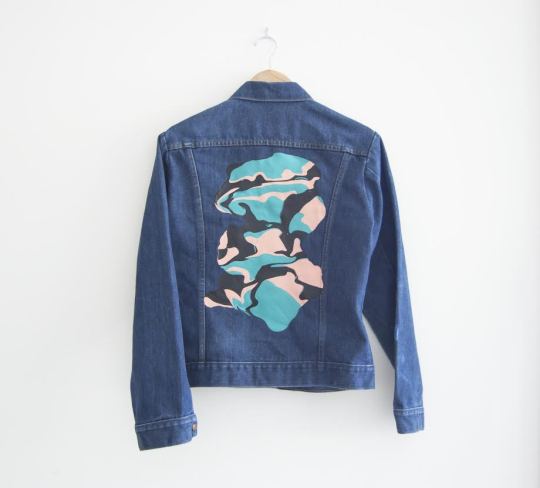
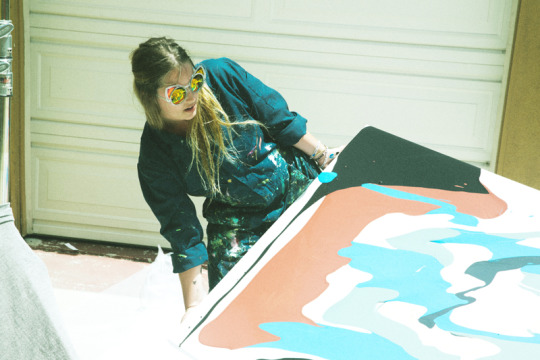

Sketchy Behaviors | Jenny Sharaf (SF)
Never afraid to reinvent herself or her art, San Francisco based artist Jenny Sharaf’s works are fluid and spontaneous; her approach fearless and at times vunerable; and her style cool and comfortably bad-ass. We’ve not only been fans of her visual and abstract creations, but also her passion to work with her community in SF and Oakland to spread art and creativity – from her work with the Lab’s 24-Hour Telethon, The Parking Lot Art Fair to her most recent project- the Public Art Tour. Sharaf shares some insight into her work and process; important issues and themes; and her thoughts on the contemporary arts scene in this installment of Sketchy Behaviors.
Photographs courtesy of the artist
Tell us a bit about yourself and your art background.
My name is Jenny Sharaf and I live with my partner-in-all-things John in San Francisco where we are the parents of an 80lb blue nose pitbull named Lola. Though i live in San Francisco, my wanderlust is at an all time high and if I’m not traveling the world, I’m plotting my next escape.
I grew up in a relatively small beach town in Los Angeles called the Pacific Palisades. Surrounded by salt-licked-waves and girls tanning on smooth beaches, my favorite place growing up was the bluffs; where I could sit above it all and watch it from a distance. I certainly was not your typical California beach babe, but I was wildly inspired by its appeal.
I found myself in San Francisco and went back to school at Mills College to receive my MFA. At Mills my ideas about feminism and California culture collided and my art was heavily influenced because of it.
My life now is a state of constantly making art. Whether it be painting, working on something digital or organizing big public art events in the city, or climbing some construction scaffolding in Paris to smack one of my stickers on the side of a building, I am always finding news ways to reinvent myself and my art.
How did you end up creating art and doing it professionally? And what have you learned along the way?
I’m just doing what I love doing and sometimes people agree to pay me for it. I create new work and new concepts non stop, I contact people that inspire me in hopes of collaborating. Even though I’m afraid at times to be vulnerable, I put myself out there every single day in hopes of new people discovering my art and hopefully falling in love with it. Being an artist can feel very scary, I think maybe I love being scared.
You’ve mentioned “process” as an important aspect of your work. Could you take us through your creative process?
When I’m in the studio or working on a project on site, I always love that intense moment of chance and not having a plan. It takes a serious level of trust in yourself and the materials. Those are the wonderful times that feel one-the-line and frightening, but are always rewarding. In those painting meditative moments, I have no sense of time and space. My best work and most dynamic ideas come out of a period of making and thinking simultaneously.
What important issues and themes do you find yourself and your work drawn too? Why are these important to you and how do they permeate into your works?
Artists are vitally important to our culture, our story and our future. They represent our freedom of speech and expression. The contemporary moment that we are living in feels very historical. Artists are more necessary now than ever and we all should critique the world around us through whatever means possible. As I’m finishing this interview, I’m watching Trump’s first week in office. It doesn’t feel real, but it very much is. This is a call to duty. This is the first president that rose to power on twitter and a tv game show. Currently it’s scary times. I suggest everyone find a great apocalypse outfit.
The colors and abstract drips of your work are some of our favorite things. You recently created a beautiful interior for last year’s Fog Fair and a mural for the Ace Hotel in Palm Springs. How did this come about and how do you approach the design of interiors and exteriors?
Both of these opportunities came through curators & designers following me on instagram. Charles de Lisle and Cultured Magazine invited me to collaborate with them on a “reading room” for the FOG art fair. It was a lot of fun and it was a moment to make something large, inclusive and accessible to an art crowd. For Ace Hotel, their art director at the time; Matt Clark, approached me after seeing an instagram post by artist, Thomas Campbell. The art world is sometimes a really nice place after all! It’s also really wonderful when one project leads to the next.
Whether you’re calling it “placemaking" or whatever new buzz word we’re using, it’s rewarding to create a work of art that people want to include in their own story. I will always love painting on canvas, but it feels much more exciting to do “murals” or large-scale installations, where the audience can insert themselves and interact with the art directly. It’s less egocentric, even though I do always appreciate a @tag :), but mainly just so I can see others enjoying my work!
From painting, murals, videos, installations to paint on paper and digital works, do you have a preferred medium and if so what do you specifically enjoy about it? Is there a medium you’ve have yet to tried and are dying to?
I’m always dying to try new things, new ideas, new materials. I probably have about thirty ideas going in my head at any given moment. As as a preferred medium, I love paint and always have. It’s the most temperamental and if you do the dance, it will talk back in this amazing way. It’s literally fluid (duh), so you have to be a bit go-with-the-flow to fully embrace the stuff. There’s nothing better than a painting session with your headphones blasting and paint just flowing oh-so-naturál. There are a million things I want to try that I haven’t yet. It’s hard to predict where it will go….That’s part of the reason I love being an artist.
What has been some of the best art advice you’ve gotten and some of the worse?
Best art advice– Dream bigger. Don’t be shy. Don’t glass-ceiling-yourself.
Worse art advice– Be practical and realistic.
Not only are you a passionate artist, but you’re really activity in your community with various projects that are focused on community engagement and about promoting the arts. Can you talk specifically about how you founded The Lab’s 24-Hour Telethon and tell us about it and its purpose. What other community based activities are you working on or currently developing?
Throwing big art events in the Bay Area is really important work to me it helps keep the art scene alive for the community and for myself. I was approached to come up with the task to raise money for the The Lab. I grew up on TV and I’ve always been particularly enamored by it because my parents were in the business. They were TV journalists and were always deep diving into the life of some interesting personality. I loved the idea of bringing that to life in a new form and so the The Lab’s 24-Hour Telethon was born. It helped majorly that Cinefamily had been doing a super awesome telethon as well. It was in the zeitgeist. San Francisco needed a version. It ended up being a big success that I am extremely proud of. Since then, I’ve done projects with San Francisco’s Department of Public Works that involves giving new life to public places by highlighting our local contemporary artists.
Most recently, I’m working on a program called Public Art Tour. It’s going to be an online experience and a series of big public events, bringing attention to local artists and San Francisco’s downtown public art. We are scheduled to do a massive party under the Bay Bridge, closing down the Spear Street’s cul-de-sac and making some legally permitted-noise;) Maybe Vans wants to set up a skate ramp? Call me.
The Parking Lot Art Fair that you founded in the Bay Area sounds like a super fun and exciting get-together. How would you describe this event to folks? What has been the best aspect of this for you?
It was a blast. Basically, The Parking Lot Art Fair was a renegade art fair outside of a “legit�� art fair at Fort Mason (in San Francisco). All the artists set up very very early morning, as soon as the parking was free and permitted. At that point, the chaos began. The best part was being able to see the Bay Area art scene spread out in oceanside parking lot and realizing how much talent and weirdness this place still has left. San Francisco and Oakland have had many growing pains in the last few years and because of it the art scene has also foregone many changes. In terms of housing costs (studio space, etc) a big portion of our community has had to leave. So to be able to celebrate a more fringe art scene feels insanely gratifying.
How would you describe your personal style? Favorite Vans?
My personal style is all over the place. I like to be comfortable. When I’m not in my painting white or navy onesies and painted Vans (raw canvas pair I’ve probably had for 10 years), I love to play with fashion and try on different looks. Right now my look is very Gloria Steinem plus a sixties-Italian-cyclist inspired; ripped black jeans, my boyfriend’s cashmere sweater and a fringe black suede jacket. I always wear sunglasses - my look never feels complete without them.
My favorite vans are the classic black and white checkered low tops. They always look effortless. OR the high top surfer-girl-chic sneaks.
Name 5 of your favorite artists, followed by some of your top 5 favorite bands / musicians to create too.
Artists: Helen Frankenthaler, Joan Mitchell, John Baldessari, Joan Brown, Alicia McCarthy
Music: Paul Simon, alt-J, Jungle, Ace of Base,Haim
What are your thoughts on the state of contemporary art? The good, the bad, and the ugly.
The good - the art world is accessible than ever because of social media and the internet. You can basically get anyone to see you work these days, which is a big change from ten years ago.
The bad - there’s still a lot of old white guys that seem undeserving of shows, but they know people and they already have money to create massive bigger-the-better machismo art.
The ugly - the art world is huge, and can be incredibly hard to navigate and can be mean. We should all work harder to be nice to each other, especially about something as special as art.
You’ve worked with various clients and done many collaborations. What have been some of the most rewarding projects? What do you like best about collaborations and what are some of the aspect you’d like to see changed or evolved if any?
I love collaborating with cool brands. Working with the Ace Hotel is always awesome. Such great people and a company that really gets the creative experience. I just worked with this handbag line Luana Italy. They really let me do whatever I wanted and honored my voice as an artist, which I always greatly appreciated. I think big brands are finally embracing and empowering the artist's’ voice– allowing the space it takes to achieve that.
What would you tell folks who want to follow in your footsteps? Pitfalls to avoid and/or words of inspiration.
I’d say, don’t follow in anyone’s footsteps. That’s always something to remind yourself. Make your own path and listen to your own visual / conceptual impulses.There is absolutely no rule book or how-to guide to being an artist. It looks different for everyone. I by no means have figured it out, but I do try to practice trusting the inner voice and taking risks.
Lastly, what’s up for 2017? Any exciting projects you can let us in on?
For 2017, I plan on working hard, painting like a madwoman and traveling. I’m doing some fun projects with B&O Play by Bang and Olufsen as a cultural ambassador- public art events, listening parties, contemporary art experiences. Also, I’m curating a weekend at Ace Hotel and Swim Club Palm Springs on March 18th called “What’s Your Name / Who’s Your Daddy” featuring Sahar Khoury, Alicia McCarthy, Francesco Igory Deiana and Jess Meyer. Also, planning some mural projects overseas, but it’s too early to talk about. Don’t want to jinx it! Follow me on instagram to keep up with it all:)
Website | Instagram | Public Art Tour
84 notes
·
View notes
Text
The Chrome Extensions We Can’t Live Without
Nearly two-thirds of internet users turn to Chrome for their browsing needs, but far fewer take full advantage of its available extensions, the add-ons that elevate it from good to great. If you're one of those plain vanilla Chrome users—or if you've only dabbled in the extensions game—check out these sprinkles of joy that the WIRED staff swears by.
The following list of Chrome extension recommendations is by no means comprehensive; there are plenty to explore and discover in the Chrome Web Store. (If you go exploring, just make sure you stick with reputable developers.) But these are the ones we depend on every day to keep our internet experience as sane and enjoyable as possible. May they do the same for you.
Wayback Machine
Have you ever clicked on an interesting link, only to be greeted by a 404 Error? Wayback Machine’s Chrome extension can help. Created by the Internet Archive—a nonprofit that preserves billions of web pages—the extension shows you what a website looked like in the past, even if has since been deleted. It can turn up the most recent version of a page it has saved, or go back to the first time the Internet Archive recorded it. That latter can be especially illuminating. For example, you can see what a user’s Twitter account looked like when they created it, or how a company’s website appeared when it first launched. One drawback: Wayback Machine doesn’t have a record of every webpage on the internet. But it can also help you prevent others from vanishing in the future: The extension lets you save the web page you’re currently visiting to the Internet Archive's database. —staff writer Louise Matsakis
The Great Suspender
You'll find many tab management solutions on this list, but the best by far for my purposes is the Great Suspender, an extension which, as the name suggests, suspends any Chrome tabs that you've left fallow for a given amount of time. As someone who keeps well over a dozen tabs open at any given time during the day—and often more—this has been an inestimable boon to my laptop and my sanity. And when it's time to revisit a page, a simple click springs it back to life. It also lets you whitelist any tabs, like Gmail, that are too precious to suspend. —news editor Brian Barrett
PixelBlock
Have I read your email? That’s for me to know and you not to find out. This Chrome extension spots and blocks attempts to track when messages are opened and send that data back to the sender. I know who’s tracking me by the small red eye icon that appears next to messages in Gmail. Sure, I’m not surprised that services like Mailchimp track when messages are opened, but I’m sketched out when professional contacts do the same. — Joanna Pearlstein, deputy editor, newsroom standards
animatedTabs
The best Chrome extensions effortlessly improve our lives in small but impactful ways. And animatedTabs does exactly that. Once installed, the extension will automatically load a random GIF in the center of every new Chrome tab you open. Sound annoying? Come on, people, this is a pure delight. It seems like the GIFs largely source from Reddit’s /r/gifs/, so you mostly get previously undiscovered gems; there's not much crying Jordan, or and shark cat on a Roomba. But what beats new? And all because you opened a tab to finally pay your three months overdue speeding ticket! The only downside to animatedTabs? You never know when it’s going to generate something NSFW or just dumb. But the real internet cred comes from not caring.
—staff writer Lily Newman
xTab
Bedeviled by browser-tab clutter? Try xTab. It restricts the number of pages you can have open in a given browser window. Just set your cap and go about your business. When you exceed your limit, the extension gets to culling, automatically axing your oldest, least-accessed, or least-recently-used tab. It can also prevent you from opening excess tabs altogether. I use that last setting the most; I like to do triage myself. Plus, I'm working on killing my reflexive tabbing habit, and being interrupted in the act helps keep my fingers in check. If you've tried other tab managers in the past and found them wanting, this could be your ticket; where most encourage you to cmd-T with abandon, xTab retrains you to curate a more manageable tabscape in real-time. —senior writer Robbie Gonzalez
Go Back With Backspace
In July of 2016, the world changed for the worse. Up until that point, the backspace key on your desktop keyboard doubled as a back button in Chrome. It had been that way since the browser's launch some eight years prior. By mid-2016, this action—a simple keystroke to go back one page in your browser history—had become hardwired in our lizard brains. But Google removed the backspace action that summer, because it caused a particularly Googley problem: People were losing work in web apps. When a user typed into a browser text field and hit the backspace key hoping to correct a typo, they'd sometimes inadvertently cause the browser to jump back one page, nuking whatever efforts they'd spent the last few minutes sweating over. Sure, that's annoying. But imagine the outrage of millions of Chrome users when, upon the next browser update, the backspace key suddenly did nothing. Google had neutered one of the most useful mechanisms for navigating the web. Thankfully, the company recognized our plight and just weeks later released this extension, which restores the back-button functionality of the backspace key. Hallelujah. The preferred keystroke of Alt + left arrow is still the default in Chrome, and maybe you're used to that now. But why force yourself to press two keys when you can install this extension and press only one? —Senior editor Michael Calore
OneTab
You know when you open Chrome and the browser is like, "Are you sure you want to reopen 400 tabs?" (Yes I do, and rude!) Maybe it's a selection of news articles you're planning to read later, or the aftermath of clicking through dozens of Wikipedia pages. Maybe you don't even know what's in all those tabs. Either way, keeping them all open puts a huge strain on your browser. Close them all—without losing them forever—with the handy OneTab extension. One click of the button neatly collates all your open tabs into one list of links that you can revisit later. It saves your computer incredible amounts of RAM, speeds up the browser immediately, and keeps all those links handy for when you're totally, definitely, someday coming back to read them. —senior associate editor Arielle Pardes
HabitLab
My name is Tom and I have a Twitter problem—but I’m getting help from a Chrome extension called HabitLab. Anytime I look at the bird-logoed slot machine of trolling, outrage, and thinkfluencing, there’s now a bold banner at the top counting how long I’ve been on the site that day. If I open a Twitter tab but regain my senses and close it again quickly, a pop-up informs me how many seconds I just saved compared to my usual time-wasting visit. The message comes with a different “Good job!” GIF each time; most recently it was Jimmy Kimmel. HabitLab was developed by Stanford’s Human Computer Interaction group to help those of us suffering internet distraction disorder (most of us?) take control of our online habits. When first installed, it prompts you to identify the sites you want to spend less time on. HabitLab will then keep track of your wasted seconds, minutes, and hours and display them in neat charts. It also offers a menu of “nudges” to help keep those trend lines moving in the right direction. One of them is the timer that now haunts me on Twitter, a nudge called the Supervisor. Others include GateKeeper, which makes you wait a few seconds before loading a page you’ve been trying to give up, and the devilish 1Minute Assassin, which kills a tab after 60 seconds. —senior writer Tom Simonite
Eye Dropper
I am not a designer, and I’m sure that those who are have far better tools for pulling colors off of web pages than Eye Dropper, a mostly, but not always, functional extension that lets you eye-drop any color from around the web and grab its RGB and Hex color codes. It’s particularly handy for quick fixes that don’t necessitate slowing down your computer by opening Photoshop—like, say, updating the text on a WIRED section page to make it more readable. It isn’t the prettiest extension, and it’s all too easy to accidentally trigger the eyedropper if, like me, you’re prone to hitting alt-P instead of command-P when trying to print—but Eye Dropper gets the job done. —digital producer Miranda Katz
Ghostery
If you’ve ever seen a Google ad follow you around the entire web and back, you know just how annoying and invasive online tracking can become. Ghostery is a fascinating way to see which services websites use to track and collect data about you. It creates a little icon with a number, showing you how many trackers every site uses. Wikipedia, for example, has 0. Most other sites have at least a few. You can see what they use to monitor their website traffic and serve ads, then block services that you don’t like. It’s not perfect; sometimes it will break sites you want to visit, and you’ll have to turn it off or pause it, although the latest release uses AI powers to help minimize the collateral damage. —senior writer Jeffrey Van Camp
ProPublica’s What Facebook Thinks You Like
Facebook thinks I like arachnids because my brother writes for a TV show called Scorpion. It thinks I like Christmas Eve because Pearlstein, and it thinks I like flywheels because my late friend Eric Scott was in a band by that name. I know all of this thanks to ProPublica’s cool Facebook Chrome Extension, which helps me see what Facebook thinks about me and then lets me rate how spot-on—or not—the site’s analysis is, using the aptly named Creepy Meter. —J.P.
Pocket
I fly a lot. In the past year, I've taken roughly a dozen round trips, each with their own fun, idiosyncratic layovers and delays. To pass the tarmac time, I could watch a bunch of downloaded episodes of The Crown or The Great British Baking Show. I could read a good ol'-fashioned book. Or I could connect to plane Wi-Fi and incessantly check Twitter. Instead, what I prefer to do before leaving for the airport is save a bunch of stories to Pocket. This nifty extension allows you to stow away things you want to read later, no internet connection necessary (though if you use the Pocket app on your phone, be sure to sync it over Wi-Fi or a network connection before going into Airplane mode). Pocket also recommends stories, based on other users you follow or topics that interest you, and allows you to optimize your reading experience—I prefer a serif font with a black background and very large text to protect my fatigued eyes. But for someone who opens a million tabs with an intention to eventually read them all, it's my preferred way to dog-ear a story. If you want to start saving, here’s a shameless plug to visit WIRED's Backchannel page, chock-full of excellent long-form narratives that will transport you during your disconnected commute. —WIRED.com editor Andrea Valdez
1Password
Getting a password manager extension means getting a password manager, so definitely do that. All the major managers—LastPass, Dashlane, 1Password, KeePass—offer Chrome extensions, and they're crucial to making password managers easy to use. The browser extensions act as a quick control center to fill login forms, generate new passwords, and save new credentials into your manager. And though password managers can work without extensions, switching back and forth to a standalone desktop application can be clunky while you’re browsing online. These extensions do carry some potential security risks, but if they're what get you on a password manager in the first place, they're worth it. —L.M.
Google Calendar
You probably use Google Calendar every day—many, many times. Instead of letting it permanently squat on valuable tab real estate on your desktop, try the Google Calendar Chrome extension instead. It puts a small Calendar icon in the upper right of your browser window, right where you’d expect. Tap it, and a box drops down, showing you all the meetings you have coming up. I like the design because it reminds me of the wonderful Google Cal widget on my Android home screen. It’s just a one-shot view of the meetings and events you have coming up in the next week or two. You can customize which calendars appear, which is also nice, because if you’re like me, you have a ton of them. For more display options—or to get crazy and log in to two Google Calendars at the same time—try the Checker Plus for Google Calendar extension. It’s not official but works well. —J.V.C.
And More
WIRED editor in chief Nicholas Thompson swears by Grammarly, an extension that checks your emails, tweets, Facebook posts, and other online missives for spelling and grammar mistakes. Features editor Mark Robinson recommends Reader View, which he describes as a "one-button, rather lo-fi instant Instapaper," stripping web articles down to the bare essentials. And while senior writer Andy Greenberg has not used it and likely never would, he did find an extension called Kardashian Krypt, which encrypts your messages in images of Kim Kardashian using a technique known as steganography.
The Chrome Zone
Chrome extensions are a delight, but installing them from untrusted sources can lead to a world of hurt. (hurt = malware)
The way Ghostery has evolved ad-blocking with—what else—artificial intelligence is worth a closer look.
In 2016 we took a in-depth look at the 'Department of Chromeland Security'—the Google engineers working overtime to secure the web.
Related Video
Security
How to Lock Down Your Facebook Security and Privacy Settings
The only way to be truly secure on Facebook is to delete your account. But that's crazy talk! Here's how to lock down your privacy and security and bonus, keep targeted ads at bay.
More From this publisher : HERE ; This post was curated using : TrendingTraffic
=>
***********************************************
Learn More Here: The Chrome Extensions We Can’t Live Without
************************************
=>
Sponsored by FreePLRArticles.biz
=>
This article was searched, compiled, delivered and presented using RSS Masher & TrendingTraffic
=>>
The Chrome Extensions We Can’t Live Without was originally posted by A 18 MOA Top News from around
0 notes